Fast and Loose
1877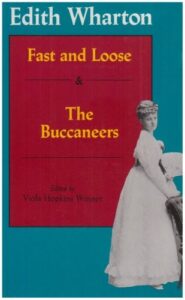
The first novel Wharton wrote was the last to be published. Written from 1876-1877 under the penname David Oliveri between the ages of 14 and 15, it was not published until 1977, forty years after her death. Fast and Loose tells the sad story of Georgie Rivers, who marries a
Read moreVerses
1878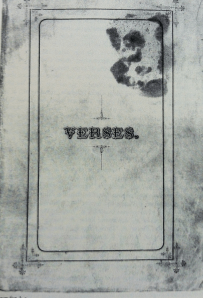
Privately printed in Newport by one of her parents (in her memoir, Wharton credited her mother; elsewhere, her father), Verses contains 24 poems by Wharton, née Jones, and 5 translations of German poets. In her own copy, she wrote “Who wrote these verses and this volume owns/ Her unpoetic name
Read moreThe Decoration of Houses
1897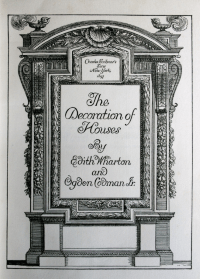
Wharton’s first major published work was a work of non-fiction, co-authored with Ogden Codman, Jr., a young architect and interior designer from Boston. He had worked on her house in Newport, Land’s End, and the two of them decided to write the book together. A reaction against the dark rooms
Read moreStories by Foreign Authors: Italian
1898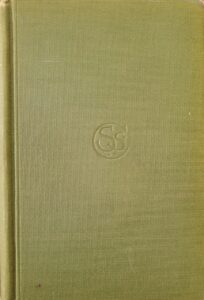
Edith Wharton translated three of the five stories in this collection: “A Great Day” and “College Friends” by Edmondo de Amicis, as well as Enrico Castelnuovo’s “It Snows.” It was part of a series put out by Scribner’s. Although she had lived in Rome as a child and read Dante
Read moreThe Greater Inclination
1899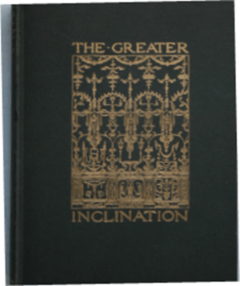
Edith Wharton’s first published short story was “Mrs. Manstey’s View,” published in Scribner’s Magazine in 1891. Her first collection of fiction, The Greater Inclination, was also published by Scribner’s but contains none of her early, published fiction, which she considered inferior. Instead, the eight stories collected here mostly appeared for
Read moreThe Touchstone
1900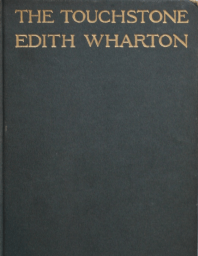
Wharton’s first novella (longer than a short story, shorter than a novel), tells of the young lover of a recently deceased, famous female author. He decides to sell her letters to earn money, pretending they were written to a friend of his, so he can marry the woman he loves.
Read moreCrucial Instances
1901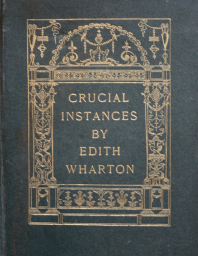
Originally titled The Line of Least Resistance after the story she thought was her best, the title was changed and the story removed after a neighbor in Lenox, Emily Vanderbilt Sloane, realized the story of marital infidelity was based on a relative. Wharton replaced the story with two new ones
Read moreThe Valley of Decision
1902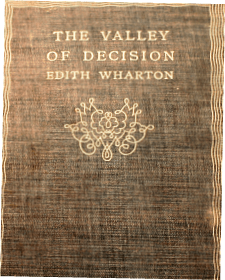
A historical novel set in the 18th century, The Valley of Decision centers on a young Italian nobleman who attempts to reform his dukedom according to the principles of the Enlightenment. Tragedy soon follows. The novelist Henry James, after reading it, told her to “do New York” instead. She did,
Read moreThe Joy of Living
1902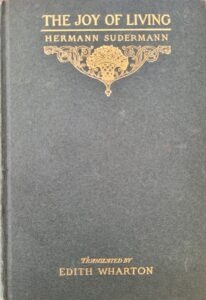
Mrs. Patrick Campbell, an English actress who George Bernard Shaw wrote Pygmalion for, requested that Wharton translate this play by the German playwright Hermann Sudermann. The play, with Campbell as the lead—a woman married to a politician whose past romantic entanglements catch up to her—, was briefly performed, to mixed
Read moreSanctuary
1903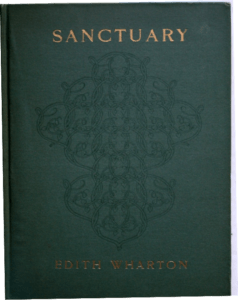
Sanctuary tells the story Kate Peyton, who marries a charming, but morally weak, man in hopes that she can provide their child with the moral strength the father lacks. Years later, the now-grown son who has become an architect comes to his mother with a dilemma. The book fared poorly
Read moreThe Descent of Man
1904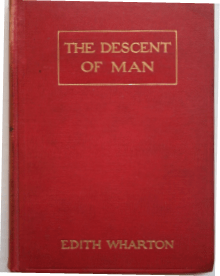
The title comes from a work of Charles Darwin, whose theory of evolution greatly shaped Wharton’s world-view. The ten stories collected herein range from the comedic “The Other Two,” in which a newly married husband meets his wife’s former husbands, to the ironic tale “Expiation” of a writer aiming at
Read moreItalian Villas and Their Gardens
1904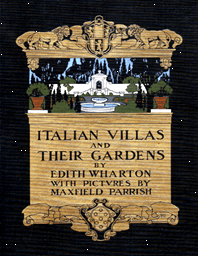
Wharton wanted to write a scholarly work on Italian villas and their gardens, her publisher wanted a more popular work. The compromise: instead of the detailed garden plans she wanted, illustrations by the popular artist Maxfield Parrish. For an interesting comparison, check out Charles Platt’s Italian Gardens (1894). His book,
Read moreItalian Backgrounds
1905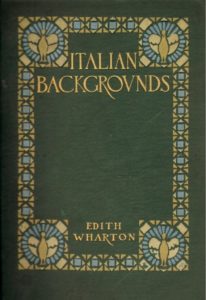
One of her several books on Italy, Italian Backgrounds documents several trips she took throughout Italy over more than a decade. The book purposely avoids many of the most famous destinations. As she wrote in a letter, “The most interesting Italy is the one in the background, behind the official
Read moreThe House of Mirth
1905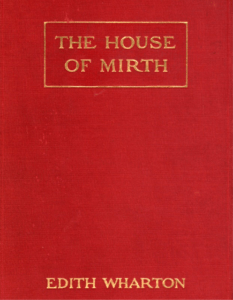
The book that made Wharton’s reputation, The House of Mirth features Lily Bart, a beautiful woman of elite New York society. An orphan, dependent upon her aunt for money, at age 29 Bart is rapidly losing her bargaining power in the marriage market. Wharton later wrote, “In what aspect could
Read moreMadame de Treymes
1907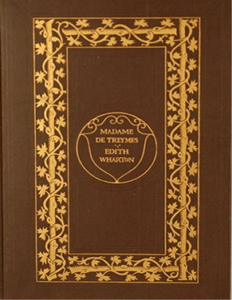
Fanny de Malrive, an American unhappily married into an aristocratic French family, wants a divorce so that she can marry John Durham, who she knew from New York. Because of French laws, that is not possible without her husband’s consent. So Durham must negotiate with Madame de Treymes, Fanny’s sister-in-law,
Read moreThe Fruit of the Tree
1907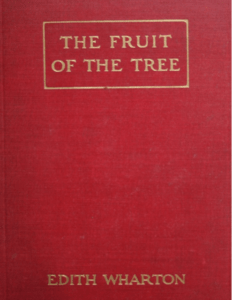
Wharton followed her hugely successful novel of elite New York City society, The House of Mirth, with this novel, which largely takes place in a Hudson Valley mill town. For research, she toured a cotton mill in Adams, MA, about 25 miles north of The Mount in the Berkshires. The
Read moreThe Hermit and the Wild Woman and Other Stories
1908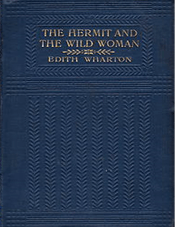
The title story takes place in medieval Italy and tells of a hermit whose life is disrupted by a woman who has fled a convent. The Wild Woman is described as having “little aptitude for the life apart” (i.e. a monastic life). Wharton also named the diary of her affair
Read moreA Motor-Flight through France
1908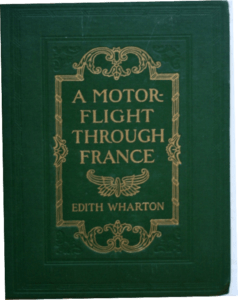
“The motor-car has restored the romance of travel” is how Wharton begins; the rest of the book backs up her claim. Constrained neither by train tracks nor typical tourist guidebooks, Wharton sees familiar sites from new approaches and explores places seldom visited. Published in October 1908
Read moreArtemis to Actæon and Other Verse
1909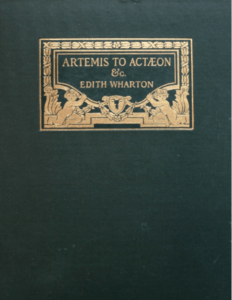
Her second collection of poetry contains some of her best poetry, including “Vesalius in Zante,” a historical poem about a 16th-century physician and the source of one of Wharton’s most famous quotes: “There are two ways of spreading light; to be/The candle or the mirror that reflects it.” Many of
Read moreTales of Men and Ghosts
1910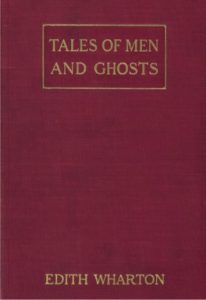
Tales of Men and Ghosts contains 10 short stories written by Wharton written between 1908 and 1910. Contemporary reviews were mixed, but the book was profitable for Wharton as each of the stories were sold for $1,000. Nowadays many of the stories are considered classics, particularly the ghost stories “The
Read moreEthan Frome
1911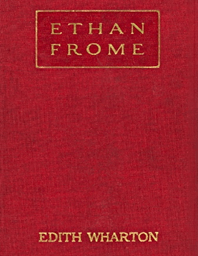
In Wharton’s classic tale of winter New England, an engineer brought in to work at a nearby power-house is fascinated by “the most striking figure in Starkfield, though he was but the ruin of a man”: Ethan Frome. Gradually he learns Frome’s story, how twenty-four years ago Ethan Frome, then
Read moreThe Reef
1912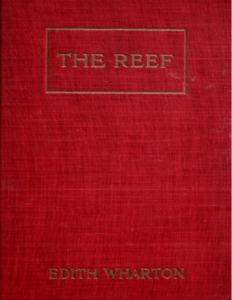
Anna Leath, the widow of the wealthy but cold Frasier Leath, rekindles her relationship with George Darrow, who wooed her as a youth. However, when she discovers he has had a relationship with her daughter’s governess, everything is thrown into doubt. For advice on this novel, which explores the sexual
Read moreThe Custom of the Country
1913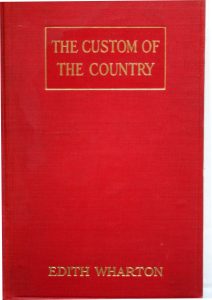
“Undine Spragg—how can you?” asks the heroine’s mother in the opening to The Custom of the Country. By the end of the book, which follows the career of Undine Spragg, a beautiful, ambitious woman from the Midwest who marries a succession of men and leaves devastation in her wake, the
Read moreFighting France: From Dunkerque to Belfort
1915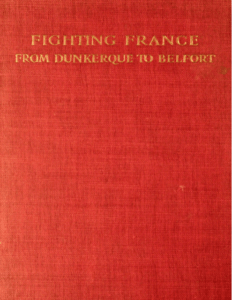
Fighting France begins with the outbreak of World War I and describes how mobilization transformed France and the French. From there, it describes a series of trips Wharton took to the Front, a place few other women were allowed to go. It is also an unusual travel book. Instead of
Read moreThe Book of the Homeless
1916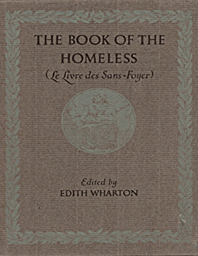
Edith Wharton drew upon her wide circle of acquaintances to produce this collection of pieces to raise money for her wartime charities. With an Introduction by Teddy Roosevelt, The Book of the Homeless contains work by Sarah Bernhardt, Jean Cocteau, Joseph Conrad, Henry James, Pierre-Auguste Renoir, Igor Stravinsky, William Butler
Read moreXingu and Other Stories
1916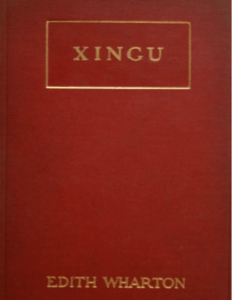
The opening title story, about a woman’s book club welcoming Osric Dane to discuss her latest novel, The Wings of Death, is one of Wharton’s funniest. The final story, “Bunner Sisters,” about two impoverished sisters who run a small shop and how their lives change once a man comes courting,
Read moreSummer
1917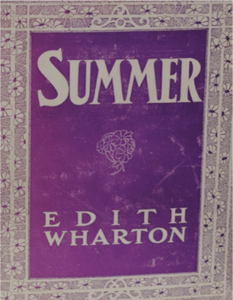
Wharton called Summer her “hot Ethan” probably as much for its setting—summertime in a small New England town near Ethan Frome’s fictional Starkfield—as its content—a young, reluctant librarian named Charity Royall becomes involved with a rich, young architect visiting from Boston. Like many of Wharton’s works, Summer addresses issues such
Read moreThe Marne
1918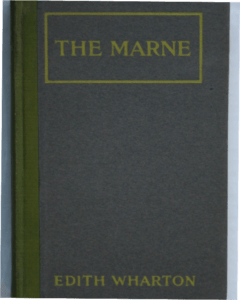
The main character of The Marne is a teenage American boy living in Paris. Too young to enlist for the First Battle of the Marne, he and his family return to America. But, four years later, he is eighteen years old and becomes a Red Cross ambulance driver and participates
Read moreFrench Ways and Their Meaning
1919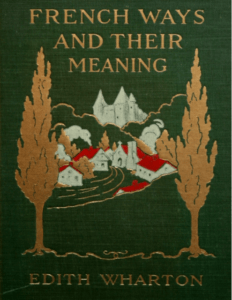
The United States Navy selected this book, which was written to explain France to American servicemen, for their ship libraries. One wonders how they reacted when they read the chapter titled “The New Frenchwoman” and found perhaps Wharton’s most explicit argument for women’s rights and criticism of the constraints placed
Read moreIn Morocco
1920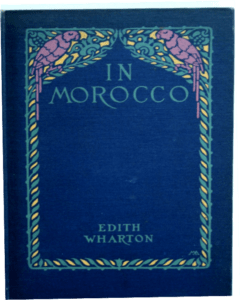
In September and October 1917, in the middle of World War I, Edith Wharton travelled to Morocco at the invitation of the Resident-General Lyautey. The result was this book, part travel guide, part justification of French imperialism. Published in 1920
Read moreThe Age of Innocence
1920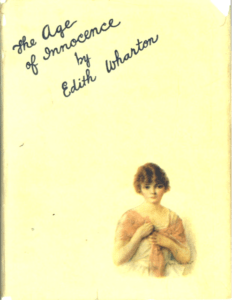
Newland Archer, a wealthy young man in 1870s New York City, is engaged to the beautiful, seemingly conventional May Welland. And then the beautiful, decidedly unconventional Ellen Olenska, May’s cousin, returns from Europe. So begins The Age of Innocence. “Yes; it’s good. But of course you and I are the
Read moreThe Glimpses of the Moon
1922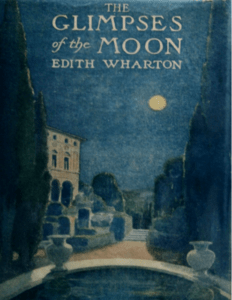
Nick and Susy Lansing are newly wed, but perhaps not for long. They married because they realized they could travel Europe, living off wedding presents and the goodwill of their friends. Neither have much money and have agreed that if either can find a wealthy spouse, they will divorce. It
Read moreA Son at the Front
1923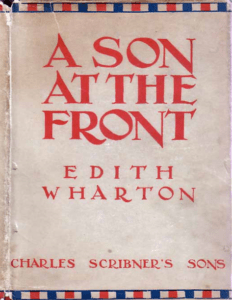
The son at the front of the title is George, son of impoverished painter John Campton and stepson of the wealthy banker Anderson Brant. While the novel takes place during World War I, and the war is central to the story, it is perhaps most of all about the two
Read moreOld New York
1924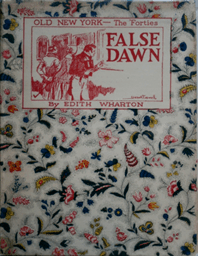
The four novellas that make up Old New York each take place in a different decade of the nineteenth century. “False Dawn (The ’Forties)” tells of young man, Lewis Raycie, sent to Italy by his father to purchase paintings, who ends up meeting John Ruskin and ends up buying paintings
Read moreThe Mother’s Recompense
1925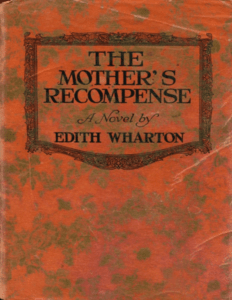
Kate Clephane, who twenty years earlier left her husband and abandoned her daughter, returns to America from Europe for her daughter’s wedding. To her shock, her daughter’s fiancé is a man who used to be Kate’s lover. Wharton’s personal copy, located in the library at The Mount, has handwritten corrections.
Read moreThe Writing of Fiction
1925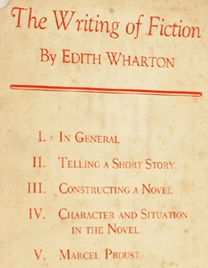
Although Wharton wrote many articles on writing and writers, this is her only book on the subject. After a chapter on fiction in general, there’s one on short stories, two on novels, and a final chapter on Marcel Proust, a contemporary author she greatly admired. While Wharton expresses strong opinions,
Read moreHere and Beyond
1926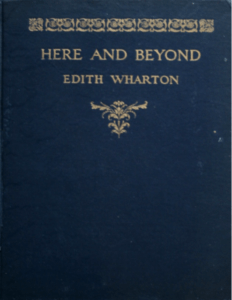
Wharton’s first collection of short stories after World War I contains no stories directly about the war. However, it begins with three of her most frightening tales: “Miss Mary Pask,” about a visit that slowly goes awry; “The Young Gentleman,” a Gothic tale of hidden secrets; and “Bewitched,” concerning a
Read moreTwelve Poems
1926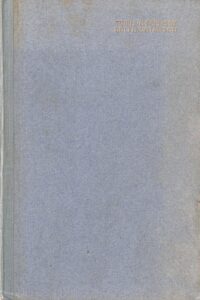
Only 130 copies of these 12 poems were published. Several of the poems, such as “The Tryst,” address the death and destruction wrought by World War I. It also contains possibly her most famous poem: “With the Tide.” An elegy for her friend Theodore Roosevelt, “With the Tide” was first
Read moreTwilight Sleep
1927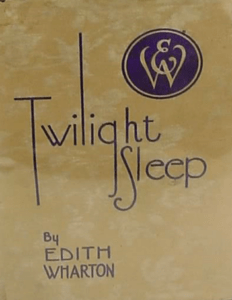
Every minute of Pauline Manafort’s day is planned out in advance, ensuring maximum efficiency. Never mind that some of her activities may contradict one another, what matters is she avoids discomfort, particularly the discomfort of having nothing to do. In this Jazz Age satire, Wharton pokes fun at everything from
Read moreThe Children
1928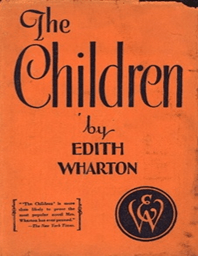
Martin Boyne, a forty-six-year-old American engineer who has spent most of his adult working abroad, travels to Europe to meet up with a newly widowed woman he has long been infatuated with. Along the way, however, he befriends a group of seven children—siblings and half-siblings, a product of their rich
Read moreHudson River Bracketed
1929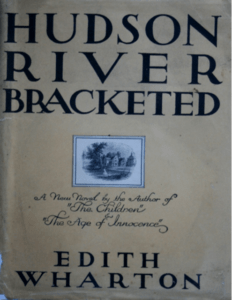
Hudson River Bracketed is the first of two novels about Vance Weston, an aspiring writer from the West who visits the Hudson Valley to recover from an illness. While there, he marries one woman, falls in love with another, and becomes an author. The title of the book is supposedly
Read moreCertain People
1930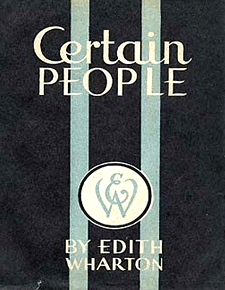
Wharton’s eighth collection contains six stories. “After Holbein” is a darkly comic tale of a society gentleman who mistakenly visits an old friend for dinner. To the horror of the servants, the two dine together, imagining they are surrounded by friends of earlier years and unaware of their present surroundings
Read moreThe Gods Arrive
1932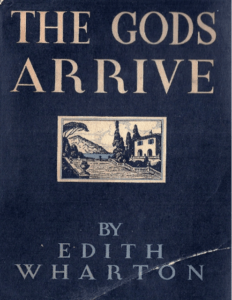
The Gods Arrive is only sequel Wharton wrote, though she considered writing sequels to The Valley of Decision and The Age of Innocence. It continues the story of Vance Weston and Halo Tarrant, née Spear, from Hudson River Bracketed as the newly widowed Vance and still married Halo escape to
Read moreHuman Nature
1933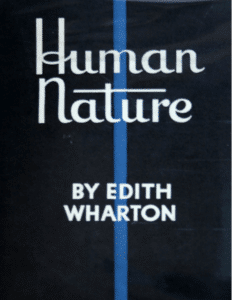
Wharton dedicated this book to her friend Bernard Berenson, an American art historian and collector who lived in Italy. Fittingly, one story, “A Glimpse,” is about creative expatriates living in Venice. Two other stories are “Her Son,” about a mother who searches for the child she put up for adoption
Read moreA Backward Glance
1934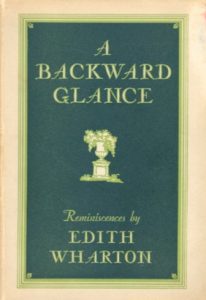
Wharton’s memoir is unconventional. In many ways, it is less about her and more about the people and places who shaped her, with sections on New York City, The Mount, London, Paris, and World War I. It is also highly selective. An entire chapter is devoted to her friendship with
Read moreThe World Over
1936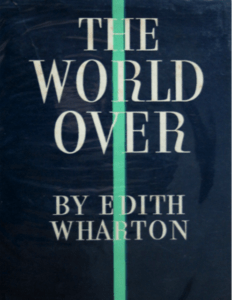
The World Over contains two of her most famous stories, “Pomegranate Seed” and “Roman Fever.” “Pomegranate Seed” is the haunting tale of a young wife who slowly becomes convinced her husband is receiving letters from his dead wife. In “Roman Fever,” a sharply ironic examination of friendship, two middle-aged women
Read moreGhosts
1937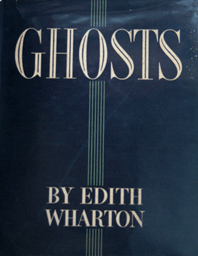
“‘Do you believe in ghosts?’ is the pointless question often addressed by those who are incapable of feeling ghostly influences to—I will not say the ghost-seer, always a rare bird, but—the ghost-feeler, the person sensible of invisible currents of being certain places and at certain hours. “The celebrated reply (I
Read moreThe Buccaneers
1938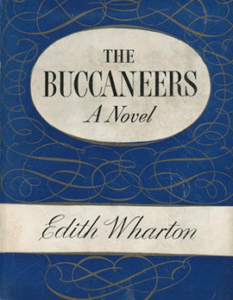
“I am writing a new novel of the same period as The Age of Innocence…This one, however, is considerably less innocent,” is how Wharton described The Buccaneers to a friend. She never finished The Buccaneers, which was published a year after her death. It tells of four young American women
Read moreEternal Passion in English Poetry
1939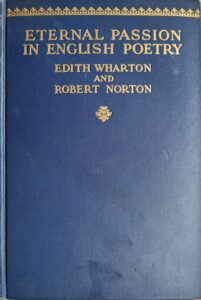
“Every anthology is always some one person’s anthology,” wrote Wharton somewhat misleadingly in her introduction to this collection of English language love poetry she edited along with her friends Robert Norton and Gaillard Lapsley. Ranging from anonymous ballads to William Butler Yeats, the book is a testament to the breadth
Read more
